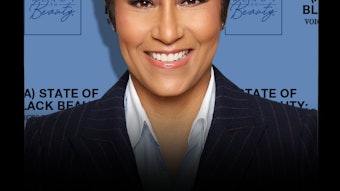- Audience engagement is the key motivation for social media strategies, and some of the best ways for beauty brands to engage is through visuals and user-submitted content.
- With the variety of social media platforms available, you need to figure out distinct strategies and goals for each outlet while also keeping all your brand marketing efforts consistent in every iteration.
- Social media is not exclusively a sales channel, but it is an area where your brand can be a little looser, offering fans a chance to engage and interact with the brand on a personal level.
The days of selling beauty solely on the aspirational promise of flawless skin, red carpet-ready makeup and supermodel looks are so 2005. All that changed when Facebook, a pioneer of social media marketing, came on the scene a decade ago.
The landscape of digital marketing and social media has evolved so rapidly it has become tricky for marketers to strategize ahead of time. Social media demands a brand’s marketing strategy extend beyond simple budgeting and planning to include adaptability, spontaneity and dynamic competitive insight. Some may still question the ROI of social media, to which brands like Aveda respond with, “Our overall social goal is not sales, instead we use it to create personal relationships.” Today, if a brand is only centered around a sales structure, it is missing out on the true value of social engagement.
It is critical to incorporate and mobilize consumers in ways that make them feel part of the beauty process, rather than on the receiving end of it. It comes as no surprise that the face of the marketing function has changed, and there is no better time than now to brush up your social media marketing tool kit to ensure you aren’t falling behind your very own product users. After all, it’s all about understanding your consumers.
Keep It Easy on the Eyes to Engage the Audience
Smart brands have learned to maintain an engaged—rather than simply a large—following, particularly in an age when you can buy Twitter and Facebook followers. Facilitating discussion is a two-way street, and it is much more effective for brand equity than simply accumulating a large volume of fans that do not interact with a brand. Hosting a live chat on Philosophy’s Facebook page with Philosophy’s senior director of on-air media and leadership development Heidi Guest or interacting with product Q&A on Clinique’s page are examples of solid engagement.
One easy tip, particularly with skin care and beauty, is to keep it visual. Let’s face it, for an average consumer in a bustling world of infinite scrolling, seeing is faster and easier than reading. Photos reportedly get 50% more interaction than other content, 10 times more shares and seven times more likes. Many beauty brands are already capitalizing on user-generated visuals. Origins features viral before-and-after photos, and Clinique maintains a visually empowered Q&A portal and constructive feedback exchange. And Shiseido uses Facebook to encourage Instagram users to post selfies with favorite products, along with relevant hashtags.
Beyond still images, video is poised to revolutionize the way consumers share. While video has traditionally been used in skin care for testimonials, demonstrations or advertising, Instagram and Vine are enabling viral marketing and personal sharing, respectively. Even Snapchat has enabled video, and Facebook continues to improve its video platforms, making video the next “it” platform for marketers to tap into. As such, marketers are increasingly launching video contests, viral 15-second ads, and clippings of commercials and products that entice viewers to view more.
Maybelline launched a two-minute viral video ,“#TopChicret – Announcing Charlotte Free as New Face of #1 Cosmetic Brand in the World,” to raise awareness on its face of the year, a tactic that, in today’s world, could easily be promoted in the six- to 15-second time frame. Further, Maybelline hosts contests via Instagram video, effectively cross-platforming and asking its fans to tweet a winter selfie hashtagged #DrRescueMe to win its Baby Lips Dr. Rescue Line, accompanied by an effective and fun 15-second video.
Execute Consistent Yet Customized Cross-platform Messaging
No two social platforms are the same, and your strategy for each of them should reflect that reality. Twitter is a 140-character text medium ideally suited for replies to fans, promotions with links and hashtags for virality. Pinterest brings the visuals to life, with little room for inserting marketing links. All that said, Branding 101 tells marketers you need to have a consistent thread running through all your marketing mediums.
The key is to ensure brand cohesiveness across platforms by using them as different outlets for the same story. You can share content across channels (tweet your pins, pin your Instagrams, etc.), which is the simplest way to ensure consistency.
When Clinique launched its Chubby Stick color lip balms, the tagline “Make someone smile” and the ad were on Pinterest, but the Facebook page had a longer claim and reason-to-believe statement, mentioning Pantone and including a link: “Lips speak volumes when they’re wearing Pantone’s Color of the Year; Go sheer or intense in these Radiant Orchid-inspired Chubby Stick shades.” On Twitter, Clinique merely placed a season-specific photo of their product. Three strategies, three platforms but one product launch. Similarly, Urban Decay frequently syncs its tweets with its Facebook posts. For example, it called for New Year’s resolutions from fans and followers, all while sharing product tips and ideas.
Consumer segmentation can be a useful guide for which content to leverage on which platforms, because it can indicate how consumers respond to and think about brand perceptions in different channels.
A skin care study by SKIM showed largely “talked about” brands like Clinique and L’Oréal Paris had positive perceptions, while those for Aveeno and Dove could be improved. But even these insights varied by platform. Brand loyalists may be more in sync with Twitter, while new users may enter via Facebook. For example, Origins shares non-brand related content via Facebook, such as a reminder to switch off lights for Earth Hour. But on Twitter, it talks of supporting the Breast Cancer Research Foundation with a BCA Drink Up lip balm, combined with a purchase link. The tonality and messages are similar, but the strategies are distinct.
Essentially, it’s about building a community, both overall for your brand and then per platform if you notice differences in audience behavior. Me Bath! refers to its fans as MBAs, a whimsical term considering its alternate acronym. A recent Facebook post from the brand suggests this name was also picked by fans, an effective use of crowdsourcing and engagement: “A long time ago we had YOU, our fans, ‘name’ themselves. They chose MBA’s ‘ME! Bath Addicts’ because they are smart, sophisticated, and fun! Thank you all for being such wonderful fans.”
And Urban Decay refers to its followers as UDers, with an apt tone of voice: “What are you rockin’ UDers?” The modern consumer is interested in having a sense of belonging to a brand and in sharing their thoughts and ideas.
Social is Not Sales
The final point is that social media is not exclusively a sales channel. Sure, you can promote new product launches or sales via social media, but they should not be the only focus. Recall that the key is engagement, which is a two-way street. When drawing a blank on what to put on a brand’s social platform besides a sales pitch, the best idea is to pose closed questions so that consumers don’t respond in prose. According to Hubspot, “Questions beginning with the words ‘should,’ ‘would,’ ‘which,’ and ‘who’ are the most effective for receiving more engagement.” If consumers can respond with images, it works even better.
The key to such updates on social platforms is to keep them short, relevant and enticing. While Twitter restricts lengths to 140 characters, there also is no reason to go long on Pinterest, Instagram captions, or Facebook. A short post can also be enlightening, like Shiseido describing what “Ibuki” means in Japanese: “inner strength, renewal, resilient enough to endure and emerge beautiful.” This is brief and inspiring, and it ties in well to the brand name and identity.
To entice product fans and aspirants, engagement tactics like contests or simple cheeky humor can do the trick. Ole Henriksen features popular “complete the sentence” or “caption the photo” contests on its Facebook page. This makes fans seem part of a marketing team, which fosters engagement and loyalty even further. For humor, relevance is also important. Origins calls consumers with puffed eyes “puffy peepers,” a nod to its No Puffery product, the formula of which got “tricked out of the tube and into a cooling roll-on” per Facebook. Humor personifies a brand further, adding a human element that makes it more relatable to consumers.
Overall, when talking on social media, brands must be honest. While there are many tips on engagement and frequency of posting, metrics and research, it is critical to be true to a brand’s roots, tone of voice and style, and to ensure consistency with traditional forms of communication. In the end, social media is just another platform to communicate with consumers, almost like extension of TV and print—just more dynamic and exponentially growing.
Sourabh Sharma comes to SKIM with a keen eye for understanding consumer behavior. He adds perspective to marketing research from his years in brand management and product development at L’Oréal, where he launched hair color and makeup products for brands in Asia and North America. His work there allowed him to file for multiple patents and present a new technology at symposiums focusing on beauty. He built on this with his work in strategy consulting in the consumer sector, which allowed him to broaden his understanding of the beauty industry. With a multifaceted background, having earned degrees in engineering and marketing and an MBA from the Wharton School at the University of Pennsylvania and the Rotterdam School of Management, Sharma enables the firms he works with to acquire a stronger understanding of their end users. Furthermore, he strives to extract value from the evolving brand-to-consumer interface through his work in social media research.










